Kisses Goodbye: The Bittersweet Moments Of Love In Wartime (40+ Pics)
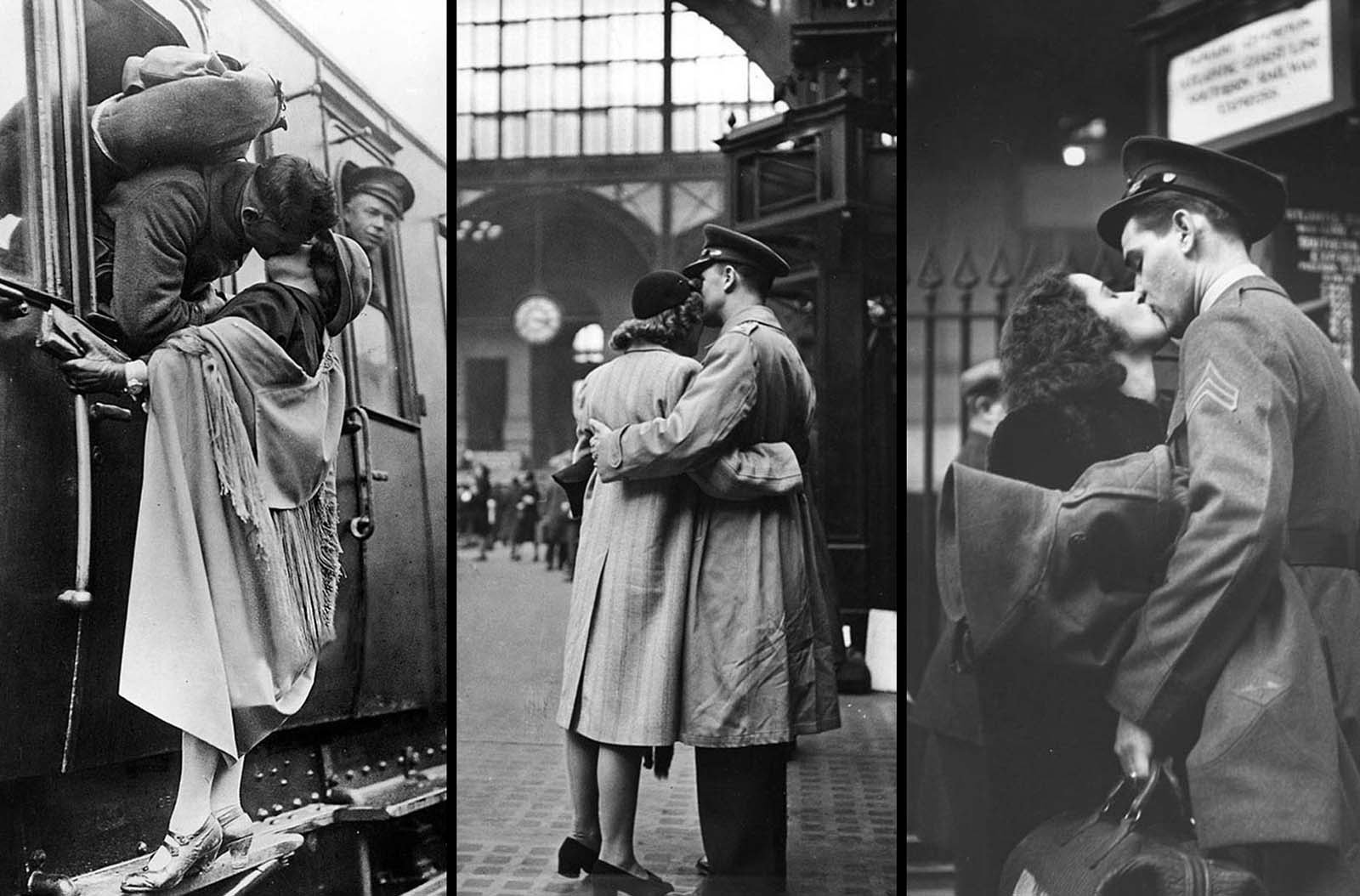
Saying goodbye is always tough, but it’s especially heart-wrenching when it’s to loved ones heading off to war.
These farewells, often captured in hauntingly beautiful vintage photos, tell stories of young soldiers bidding farewell to their girlfriends, wives, or children, knowing that they might never return.
The moments were tender, filled with both sadness and strength, reflecting the complex emotions of wartime romance.
The Height of War: A Time of Emotional Farewells
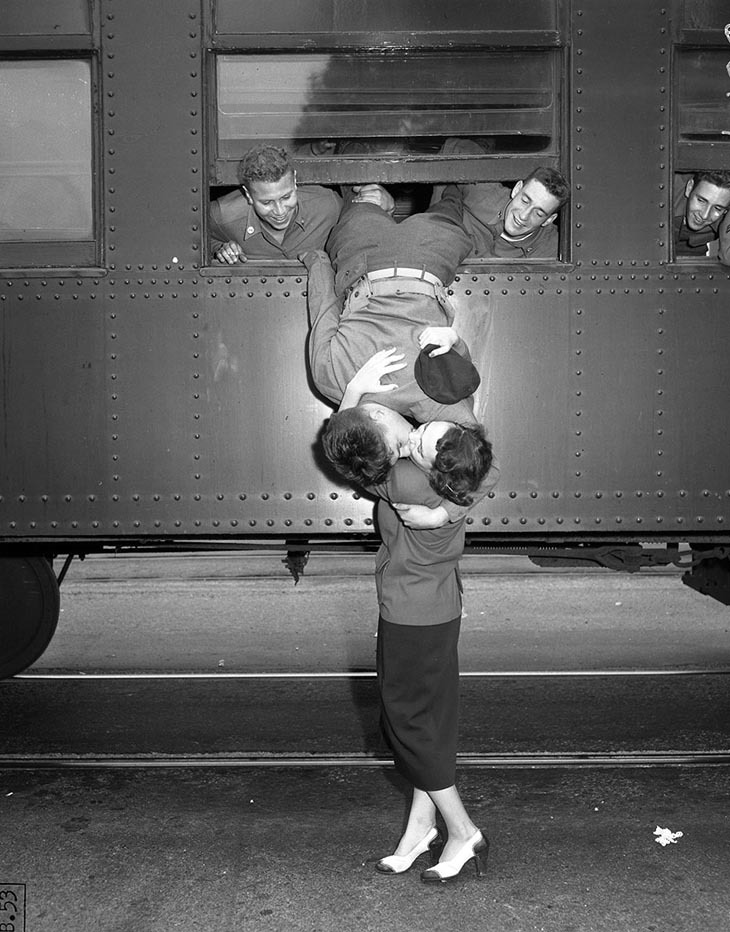
The photos captured during the height of war reveal the depth of emotions experienced by those who had to say goodbye.
Young men, poised to face the horrors of war, embraced their loved ones with an intensity that only those who understood the true cost of separation could muster.
These farewells were not merely routine; they were charged with the knowledge that the future was uncertain, and this might be their last kiss, their last embrace.
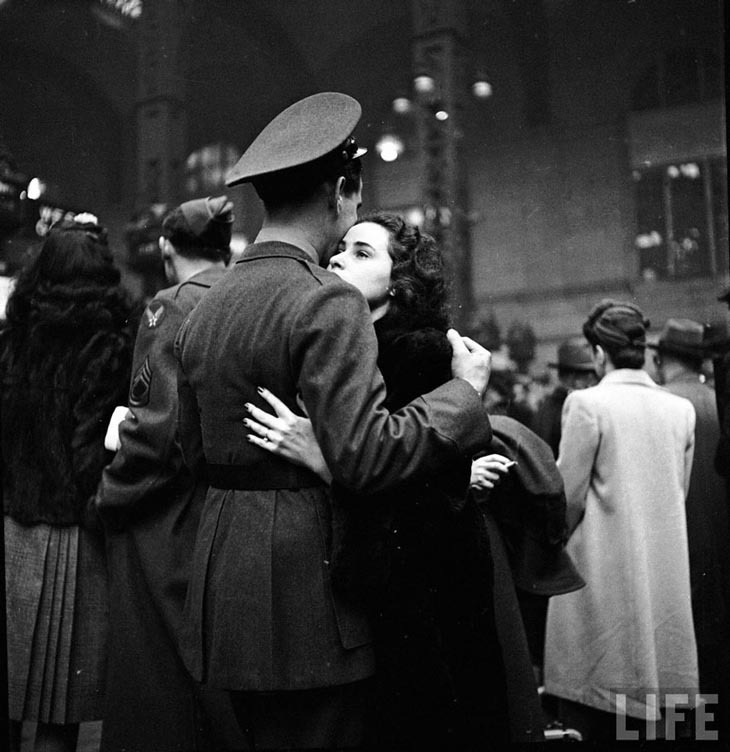
In its February 14, 1944 issue—appropriately released on Valentine’s Day—LIFE magazine featured many of these poignant scenes. The magazine described the moments in a way that captured the essence of these goodbyes:
“They stand in front of the gates leading to the trains, deep in each other’s arms, not caring who sees or what they think. Each goodbye is a drama complete in itself, which Eisenstaedt’s pictures movingly tell.”
The Raw Emotion Captured in Photographs
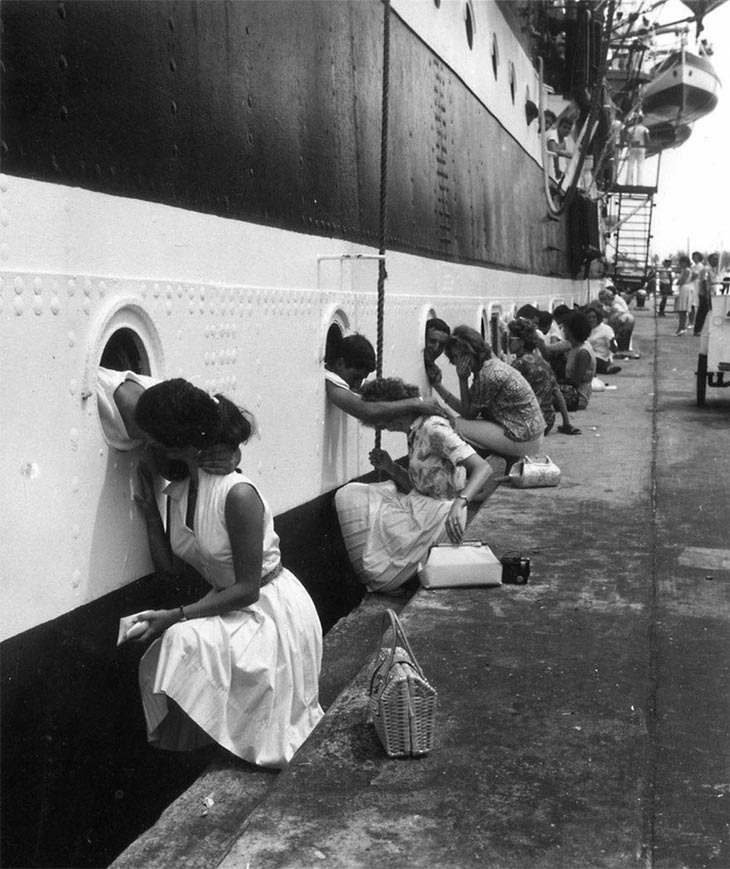
Photographer Alfred Eisenstaedt, renowned for his ability to capture the human side of war, immortalized these farewells in a series of photographs that continue to move viewers decades later.
His images portray the raw emotion of the moment—couples standing in front of train station gates, locked in tight embraces, oblivious to the world around them.
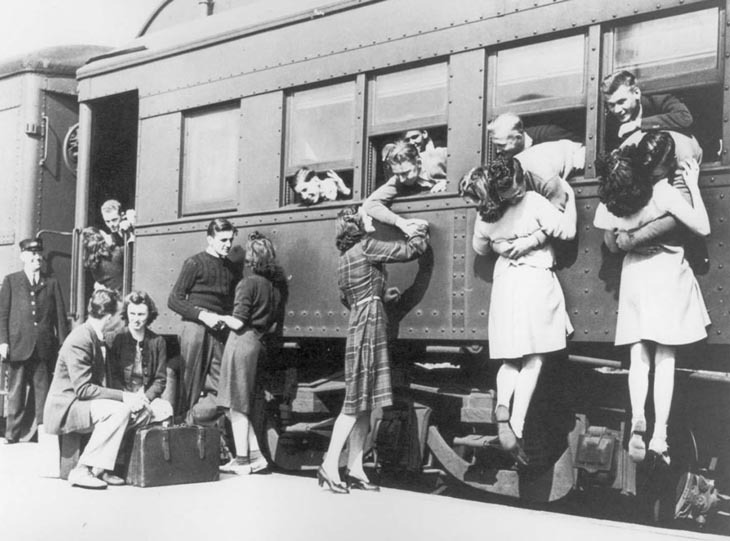
The scenes varied in their expressions of love and fear. Some couples stood with the girl’s arms tightly clasped around the soldier’s waist, her head buried into his shoulder as tears fell silently.
Others exchanged soft words, the soldier holding his sweetheart’s face in his hands, trying to reassure her amidst the fear that loomed over their future.
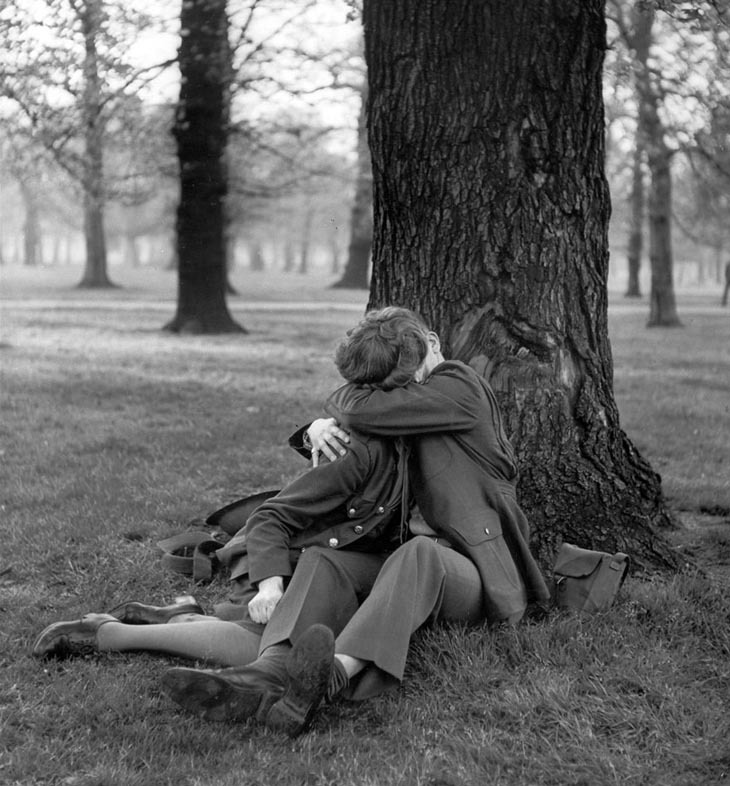
In some cases, the silence spoke volumes as they stood quietly together, savoring every second before they were torn apart.
The Nature of Wartime Romance
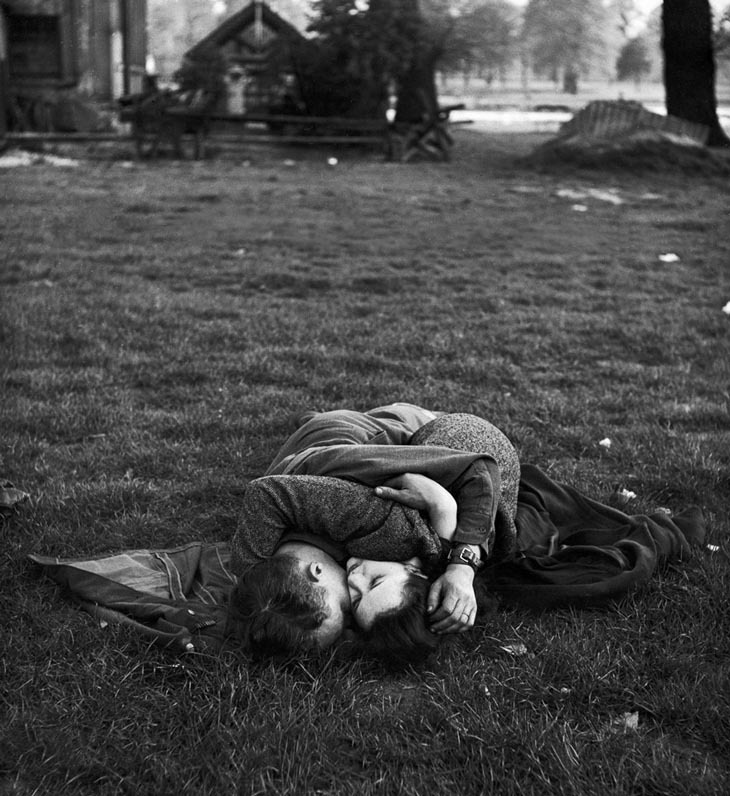
Wartime romance was defined by its fleeting nature and the constant presence of uncertainty.
Relationships formed quickly, often under the shadow of impending deployment, and love was expressed with a depth that reflected the knowledge that every moment could be their last together.
The intensity of these relationships was both a source of comfort and pain—a balm against the harsh realities of war but also a reminder of what could be lost.
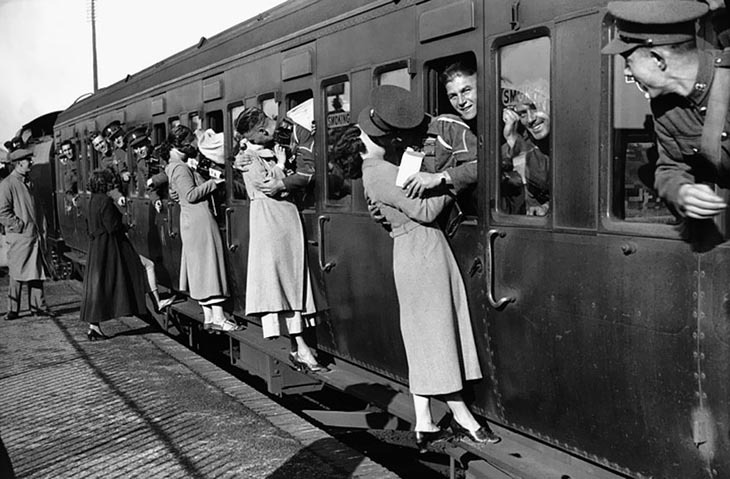
During World War II, the time soldiers spent overseas varied widely depending on their mission and location. Some soldiers were away for just a few months, while others were deployed for years.
For instance, those in the European theater often faced longer separations from home compared to those serving in the Pacific. Soldiers stationed overseas for over a year typically couldn’t take leave to return home.
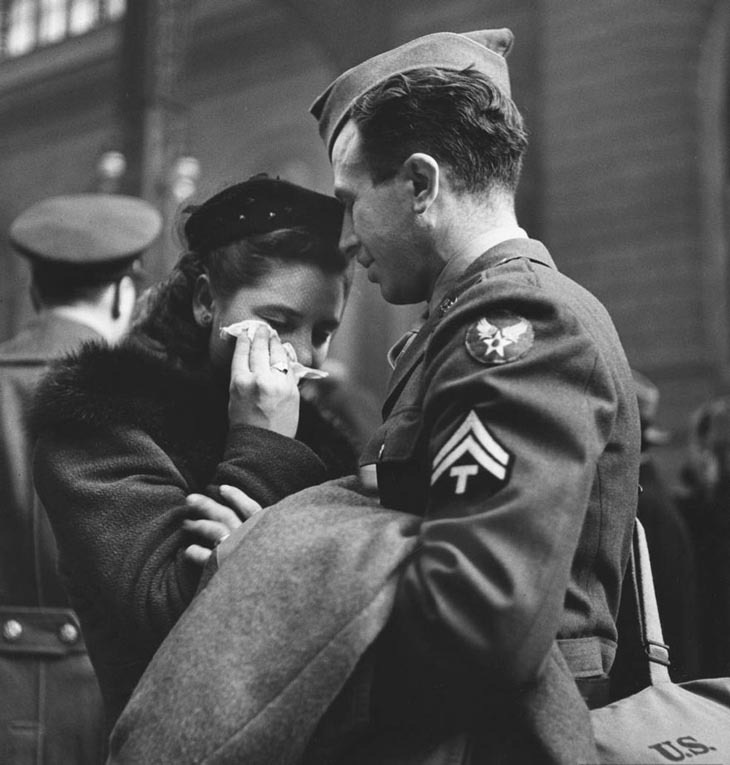
Communication became a lifeline, with letters serving as the crucial connection between soldiers and their families. These letters provided comfort and a sense of normalcy, reassuring families back home during an incredibly uncertain time.
So many letters were exchanged that space became an issue on cargo ships, leading to the invention of Victory mail, or V-mail. Letters were microfilmed to save space, ensuring that these precious messages could still reach their destinations.
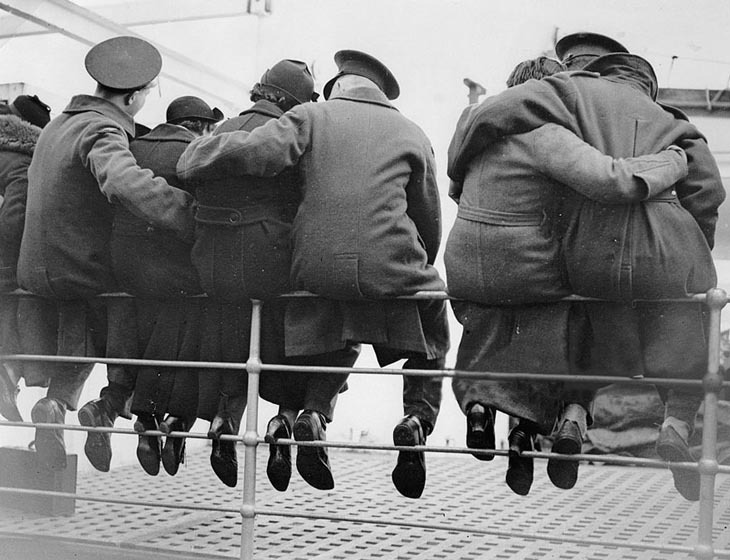
While soldiers’ letters home described the day-to-day life between battles—censored to keep military details secret—the letters they received were filled with familiar news: updates on the weather, local sports, and family gossip.
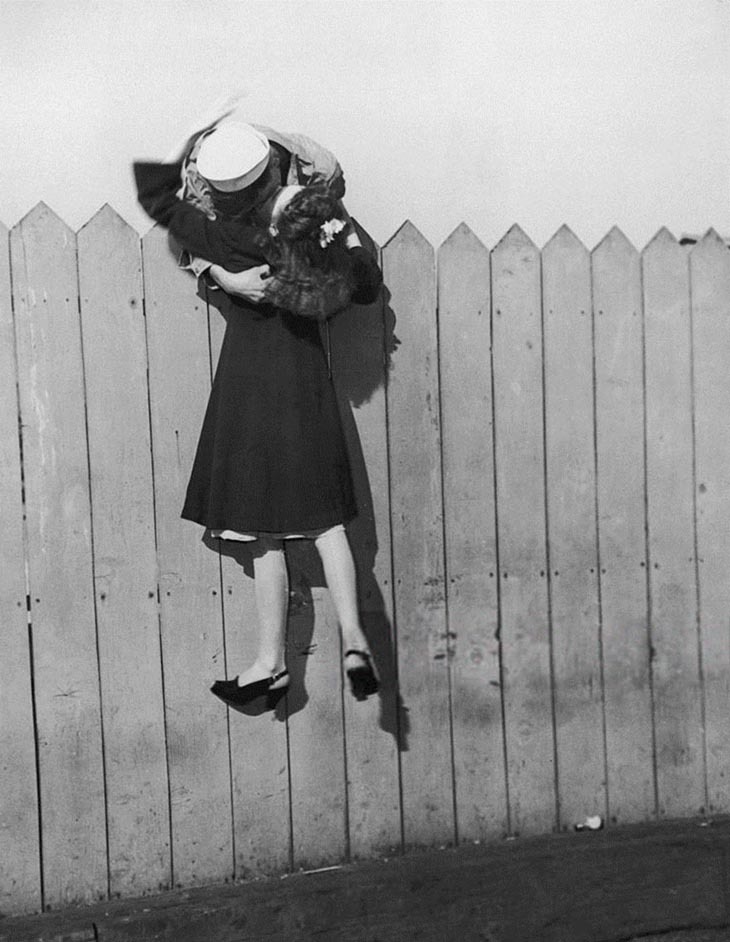
These exchanges helped maintain a sense of connection, even across the vast distances and challenges of war.
More Vintage Photos of Wartime Farewell Heartache
1. A British soldier whispers a final goodbye into the ear of a loved one before leaving for the front, 1939.
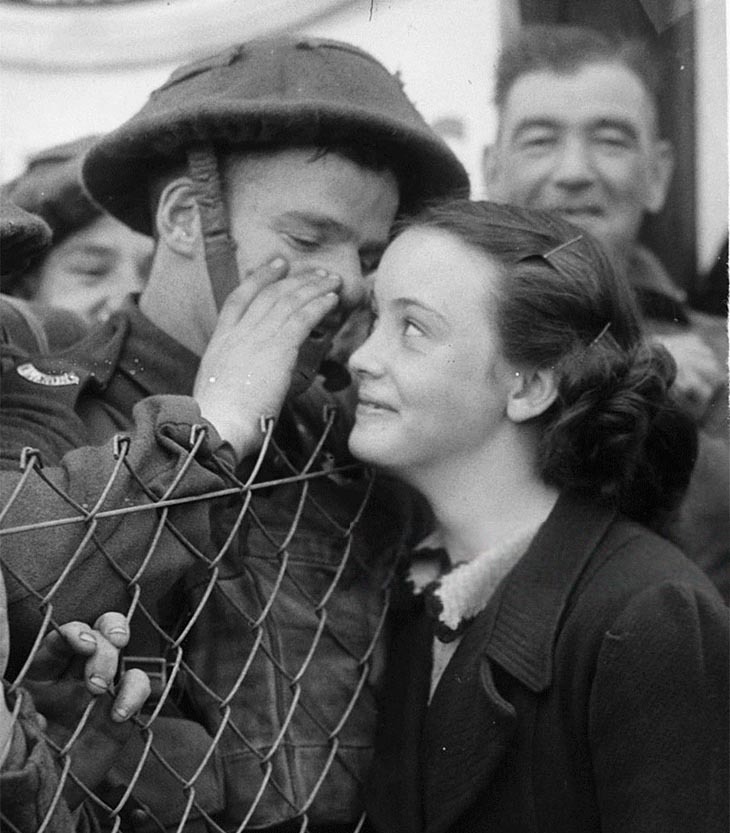
2. Farewells exchanged at New York’s Penn Station as troops prepare to depart, April 1943.
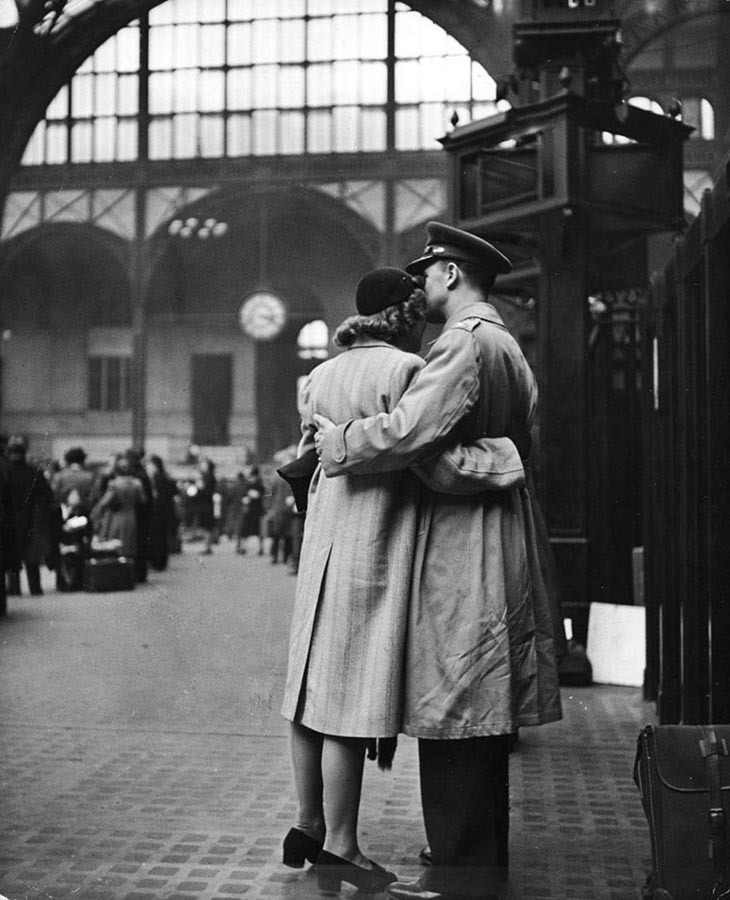
3. A US soldier tenderly kisses his girlfriend goodbye before boarding a train, 1922.
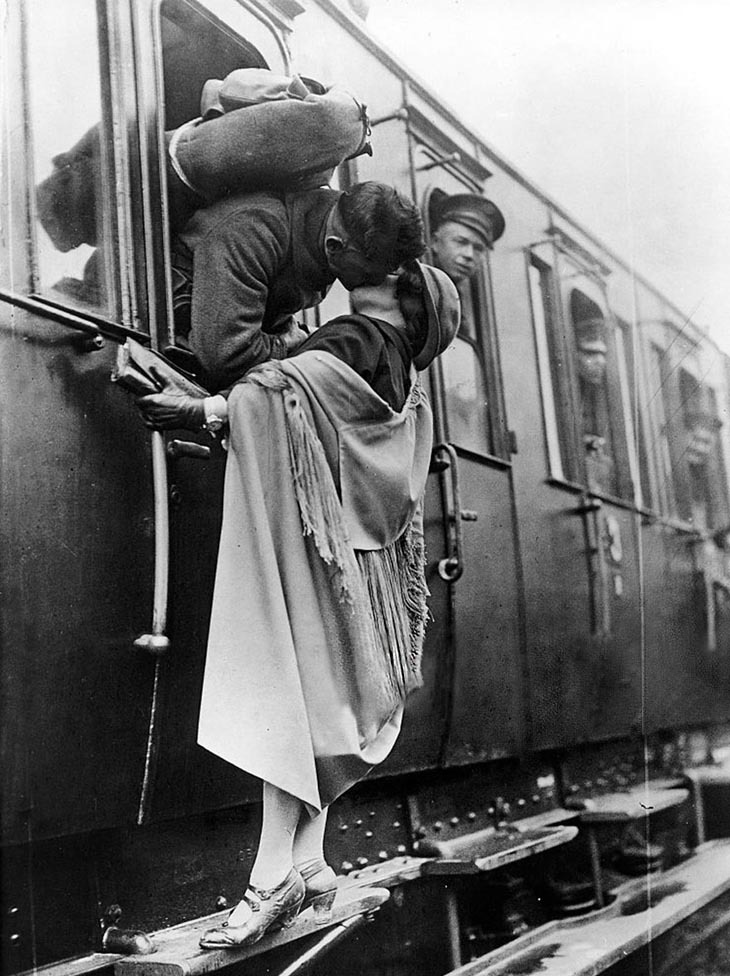
4. A young woman on roller skates shares a joyful moment with her soldier sweetheart, 1940s.
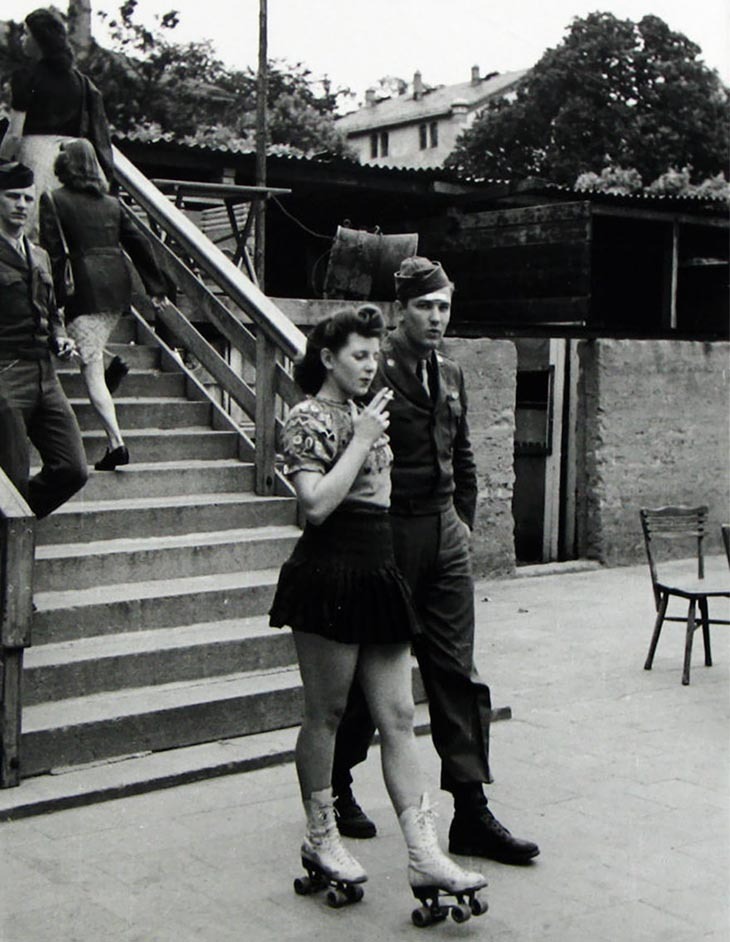
5. A US soldier gives a Japanese girl a forbidden bicycle ride, Japan, 1946.
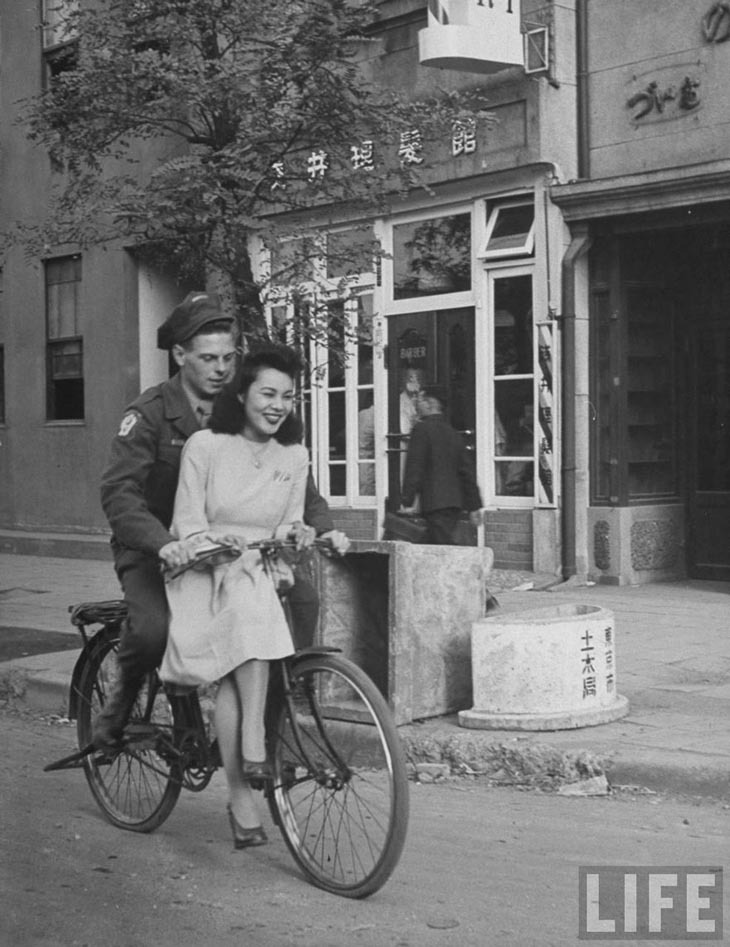
6. A GI and his girl walk arm-in-arm among the sheep in Kensington Gardens, London, 1945.
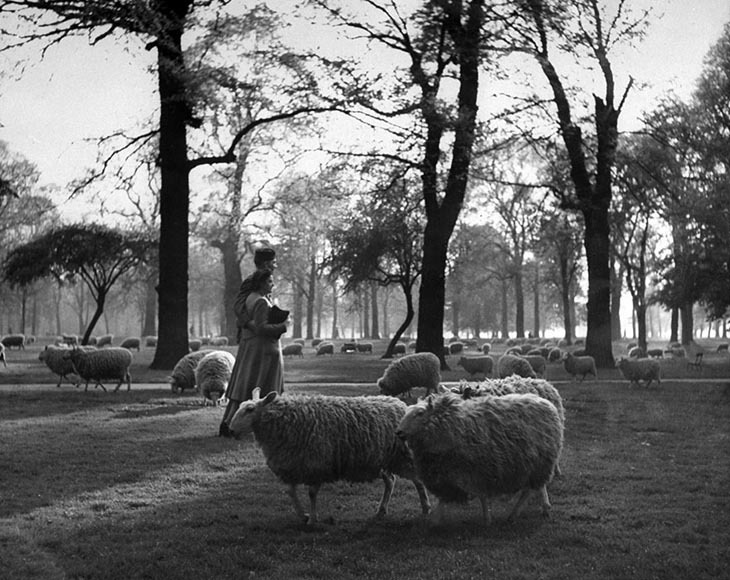
7. A girl climbs up to bid farewell to a soldier heading off to World War II, 1940.
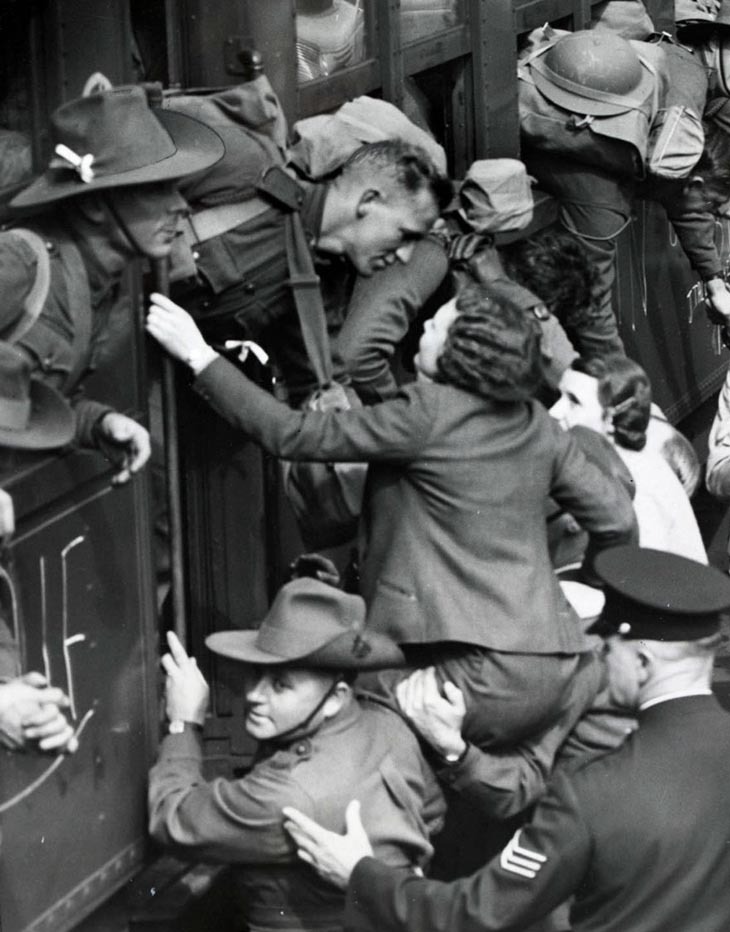
8. A couple shares a passionate farewell kiss at Penn Station before he ships off to war, 1943.
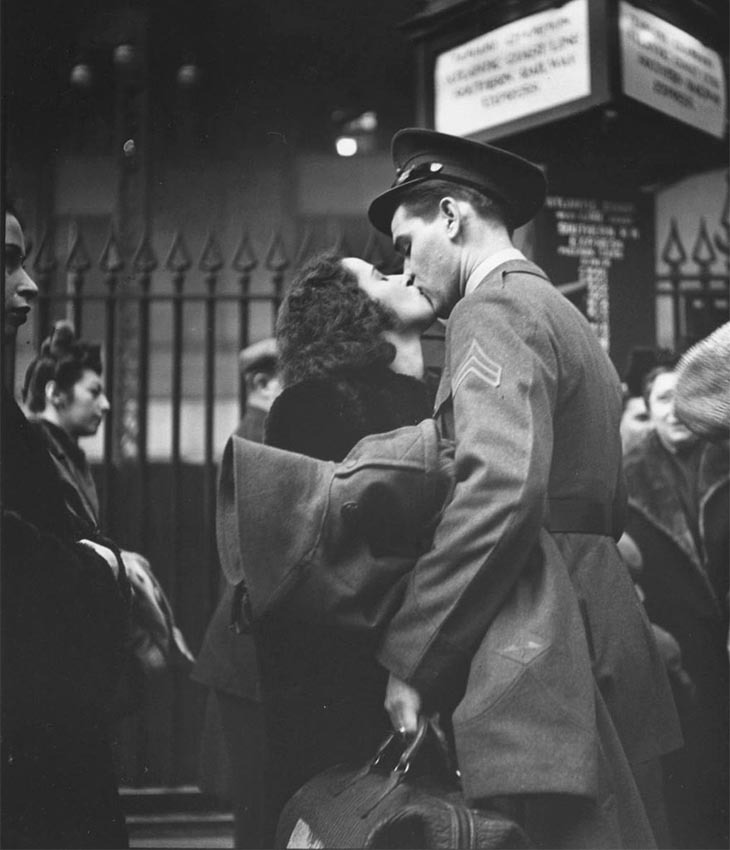
9. Servicemen and downtown workers embrace and kiss in the streets as word of surrender spreads, 1945.
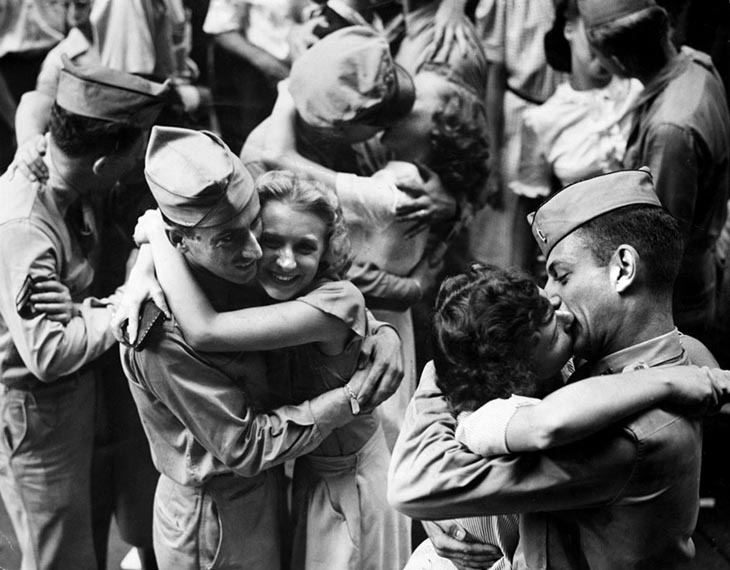
10. A young couple chalks hearts onto a tree to celebrate Valentine’s Day, 1944.
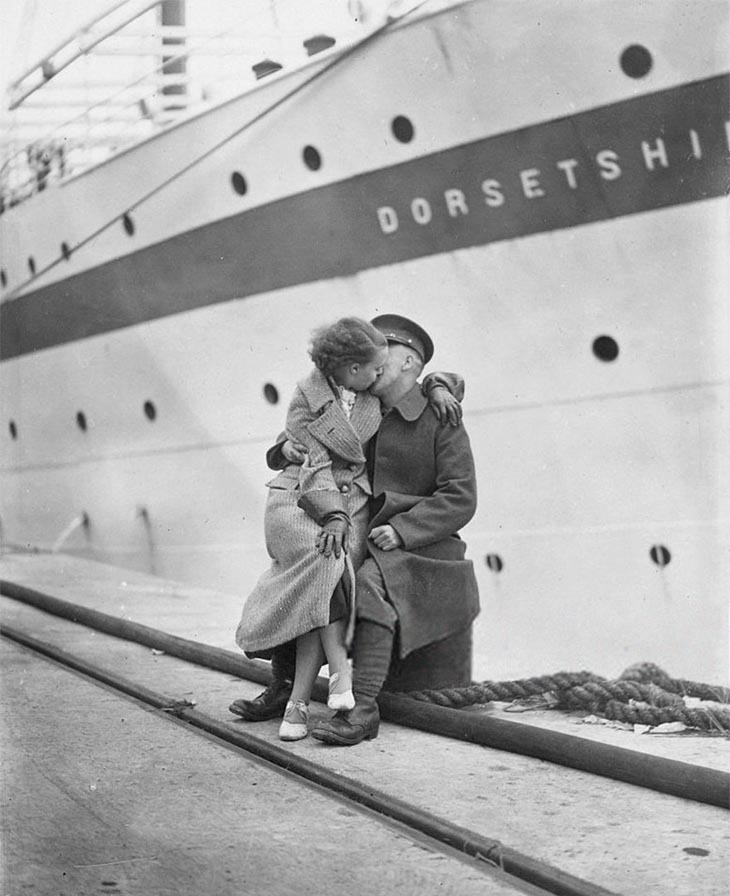
11. A US soldier and a local girl share a chocolate bar and cigarettes, 1940s.

12. A soldier bids a tearful goodbye to his wife in Seattle before leaving for World War I, 1917.
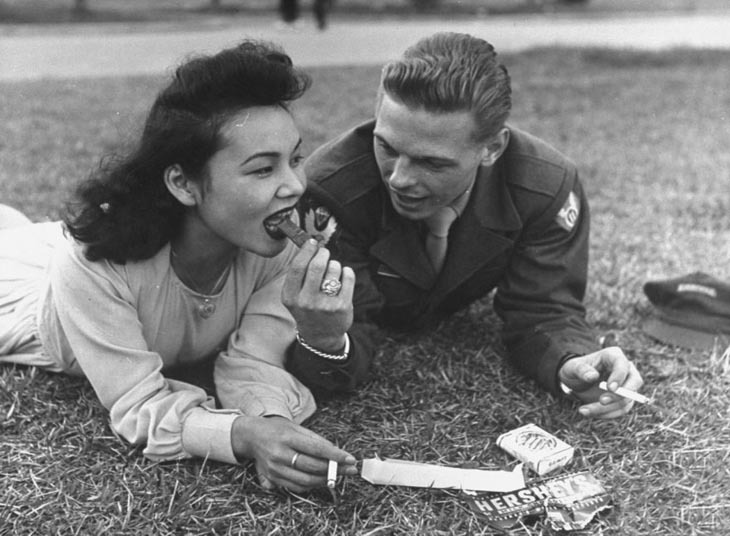
13. A couple shares a kiss goodbye as a man boards a train
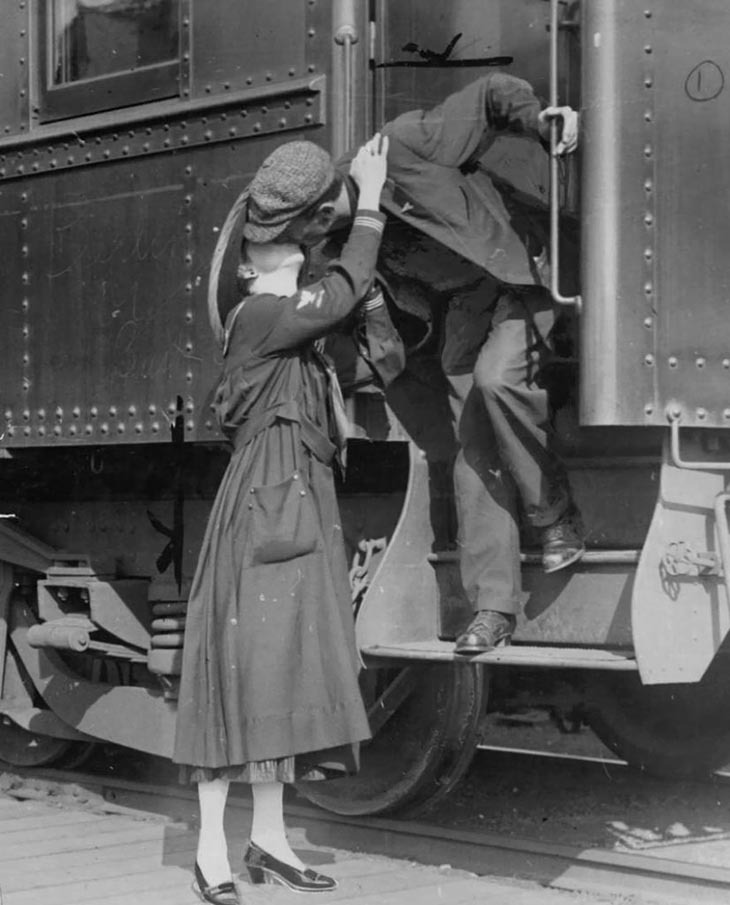
14. A sweet gift for his girlfriend before deployment, California, 1943.
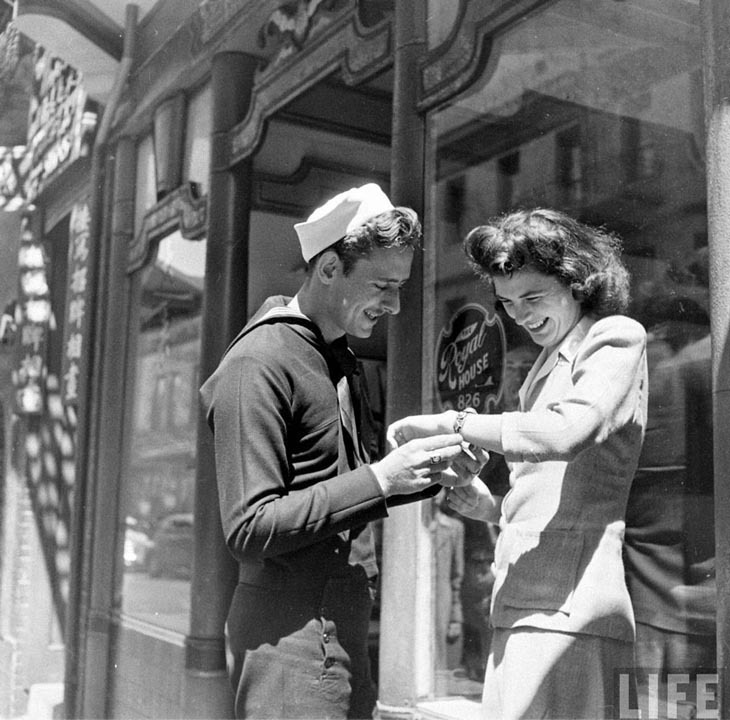
15. An American GI and his French girlfriend hold one another close while on a date, 1940s.
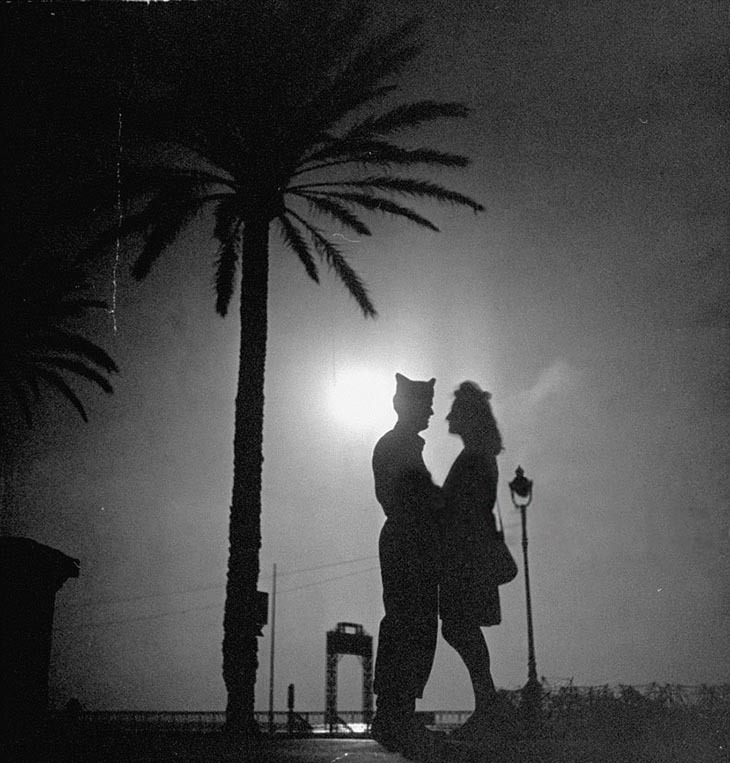
16. An American soldier and a Frenchwoman share a kiss that raised eyebrows after appearing in Life Magazine, 1944.
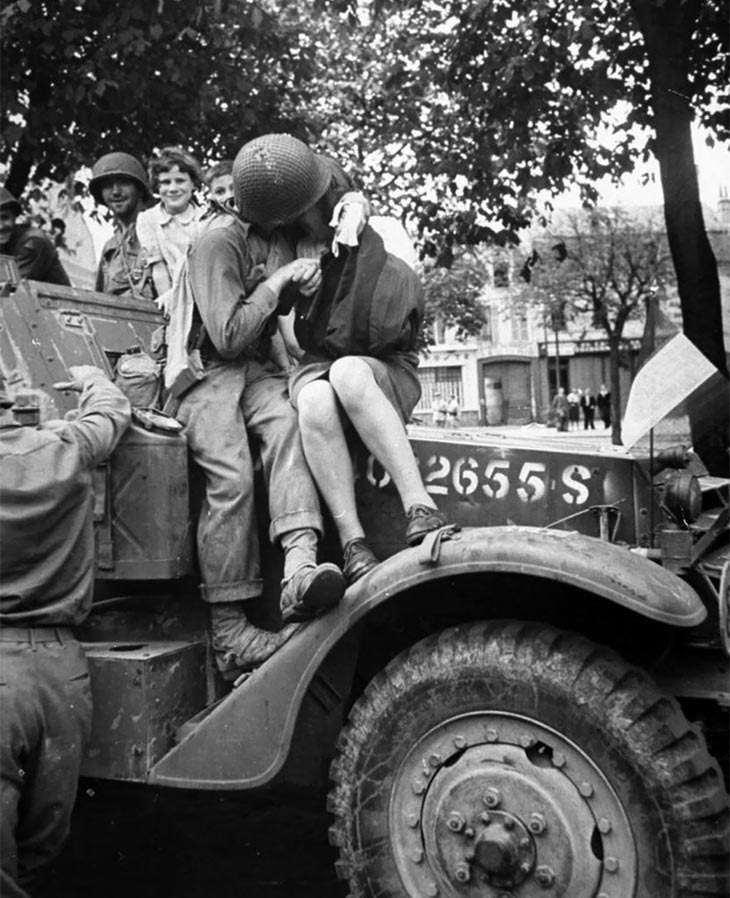
17. Farewell embraces exchanged at New York’s Penn Station as troops depart, April 1943.
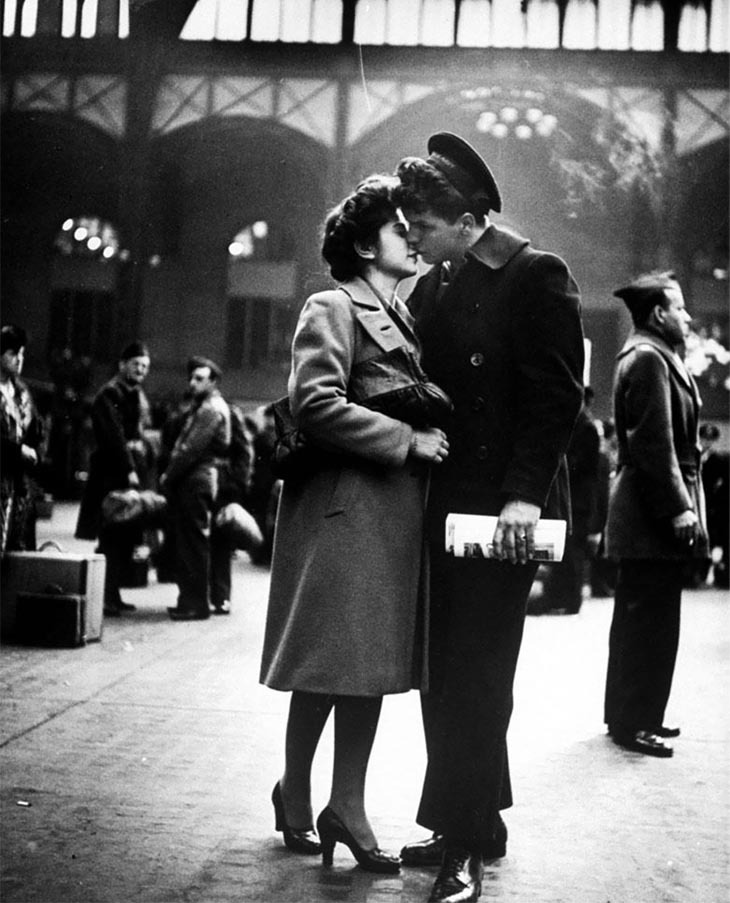
18. A soldier kisses a Red Cross nurse, 1945.
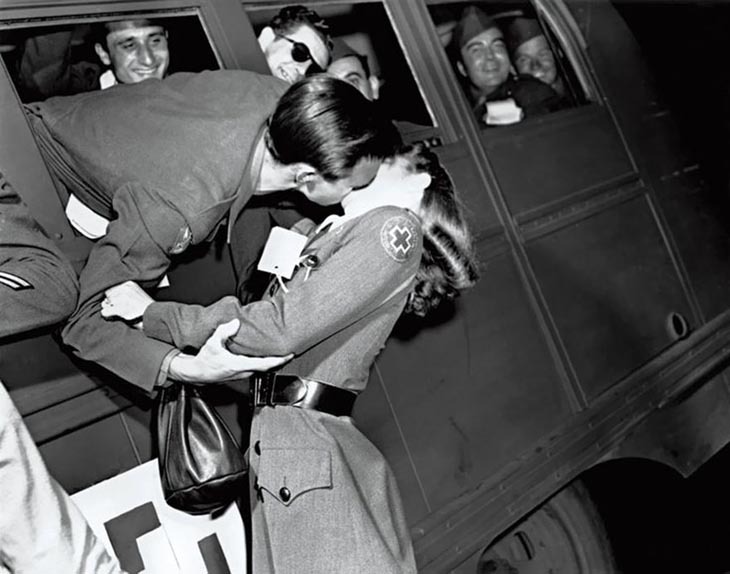
19. D. Brown kisses her fiancé Terry under the mistletoe aboard HMS Wakeful at Portsmouth, 1955.
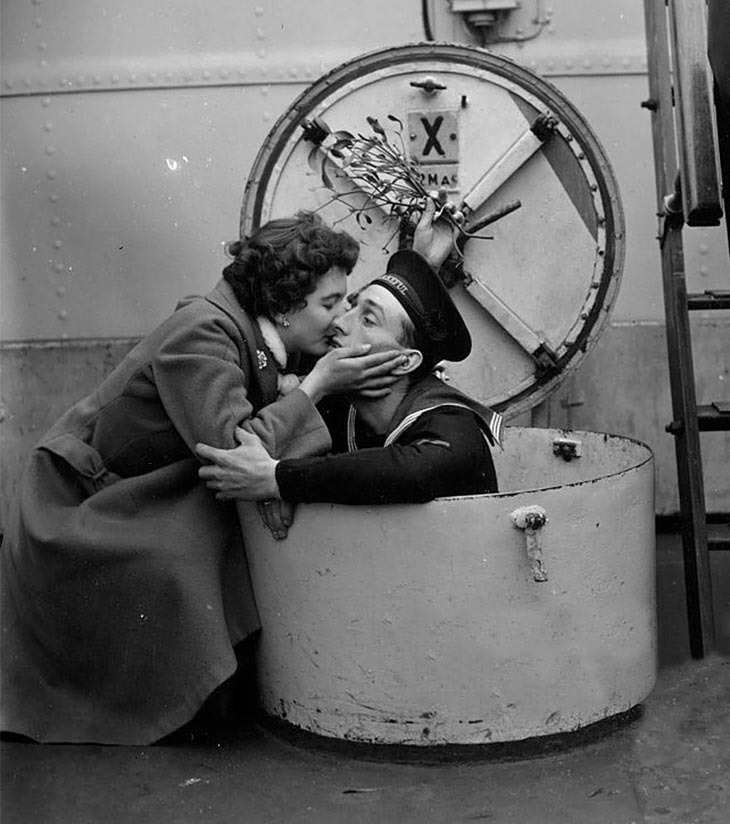
20. Actress Martha O’Driscoll bids a soldier goodbye with a kiss in Los Angeles, 1941.
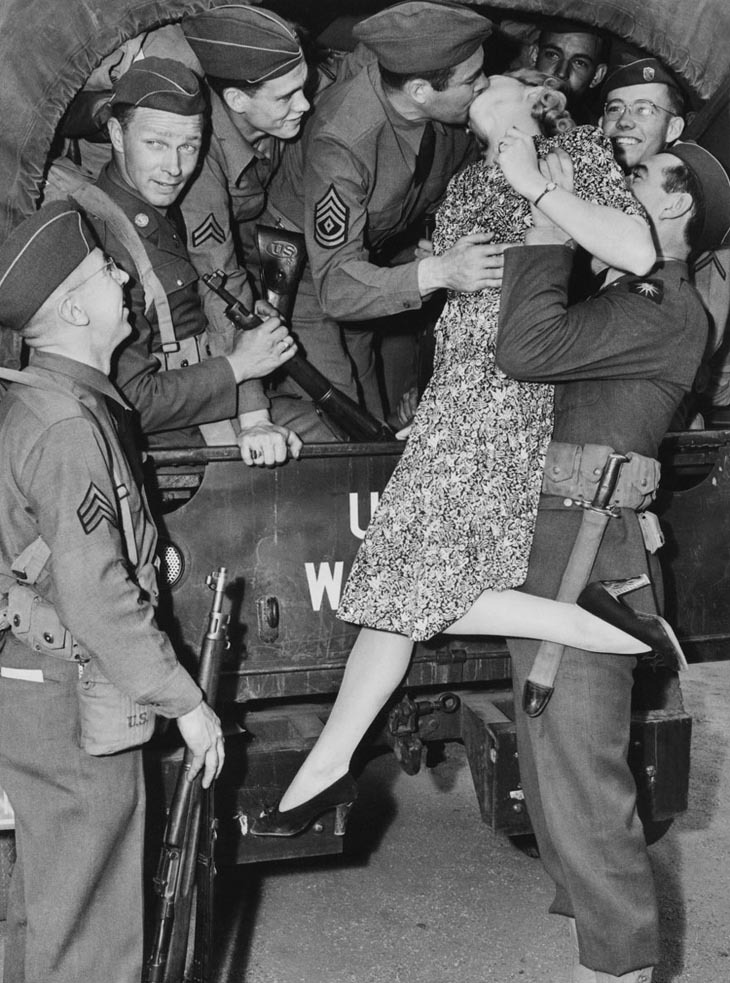
21. Couples share tearful goodbyes in Toronto as they part ways for war, 1914.
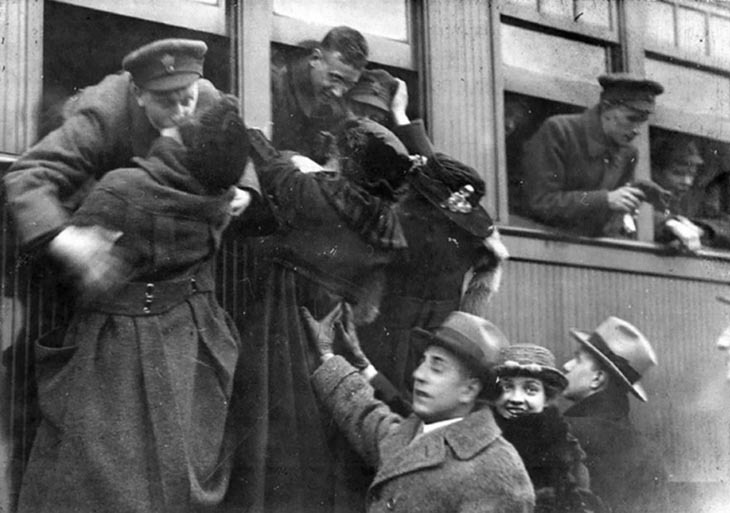
22. Comrades tease a soldier kissing his girlfriend before departing from Waterloo Station, London, 1939.
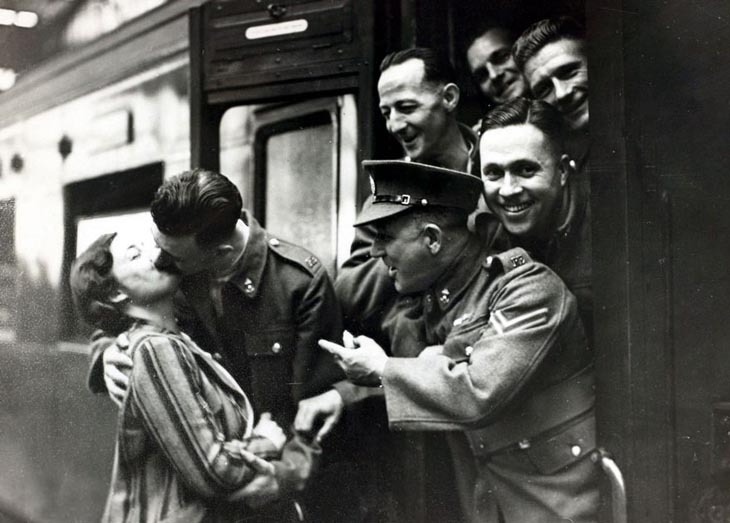
23. A British Tommie bestows a final kiss upon his Rhineland sweetheart as his detachment leaves for England during the evacuation of Germany, Königstein, September 1929.
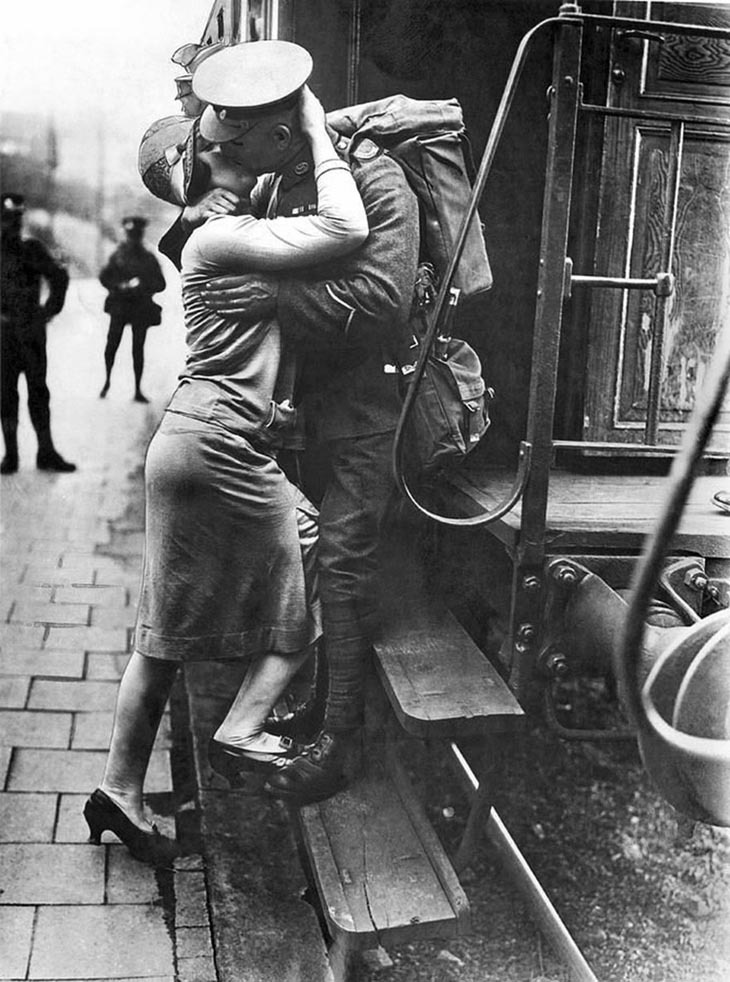
24. A farewell kiss shared at Penn Station as troops prepare to depart, 1943.
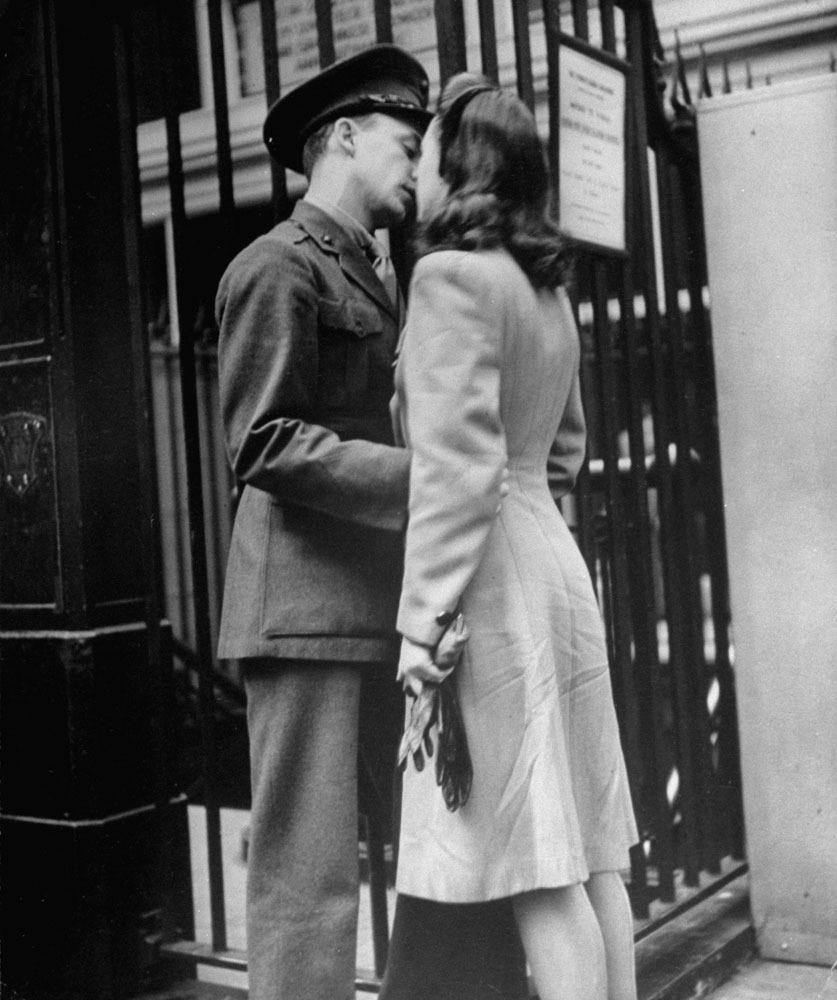
25. Farewells exchanged at New York’s Penn Station as soldiers depart for the front lines, April 1943.

26. Troops bid farewell to loved ones at New York’s Penn Station before deployment, April 1943.
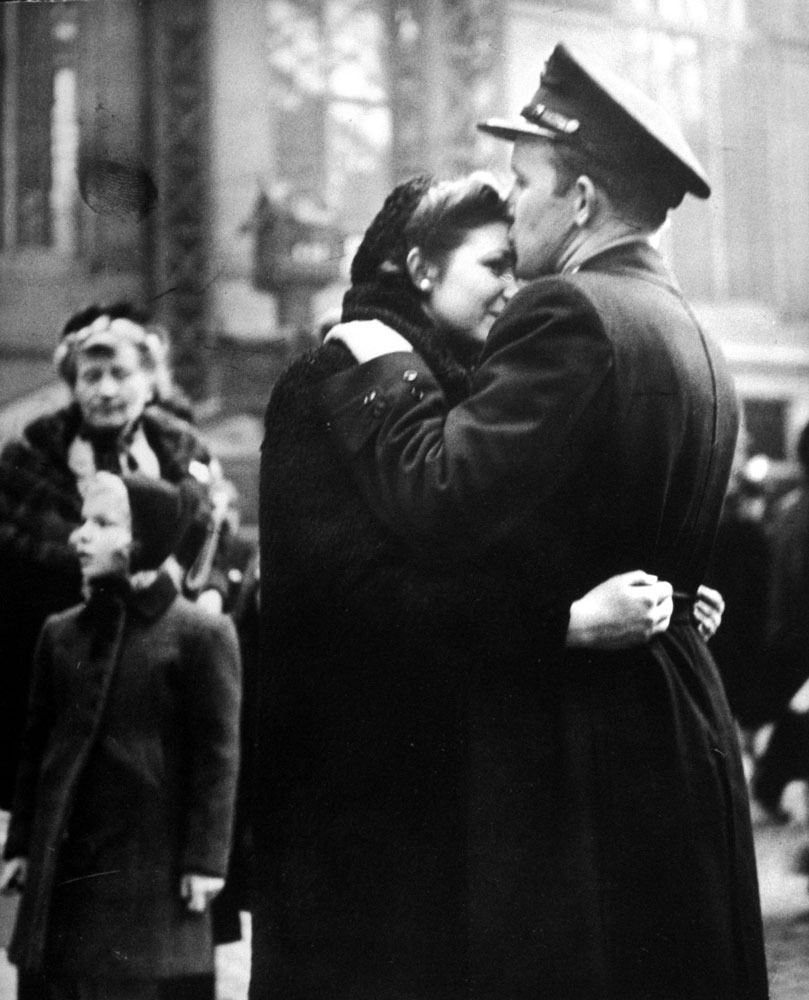
27. Emotional goodbyes shared at New York’s Penn Station as soldiers prepare to ship out, April 1943.
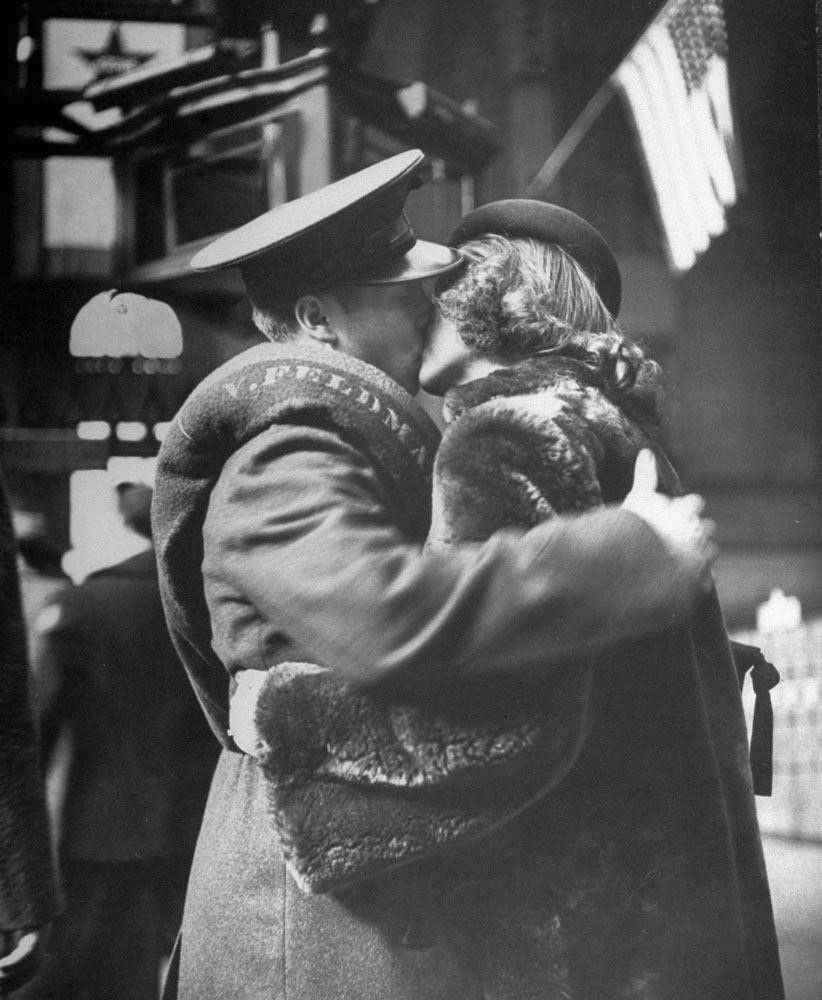
28. Last kisses exchanged at New York’s Penn Station as soldiers prepare to depart, April 1943.
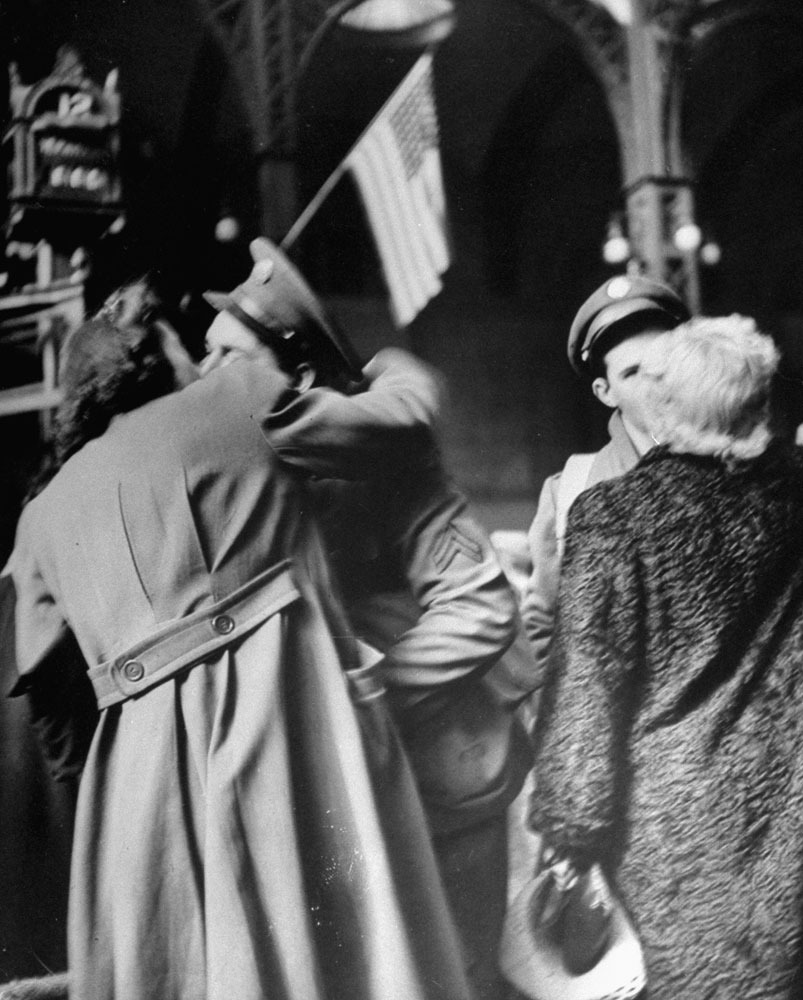
29. A final embrace at New York’s Penn Station as soldiers leave for the front, April 1943.
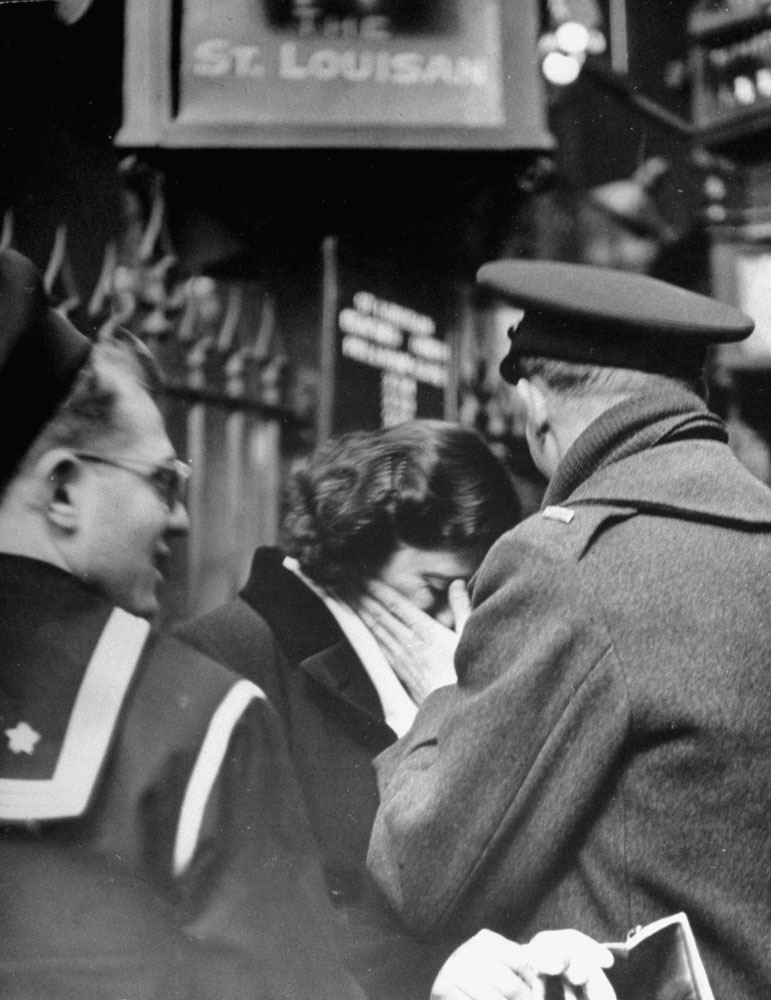
30. Soldiers lean out of train windows to share farewell kisses at New York’s Penn Station, April 1943.
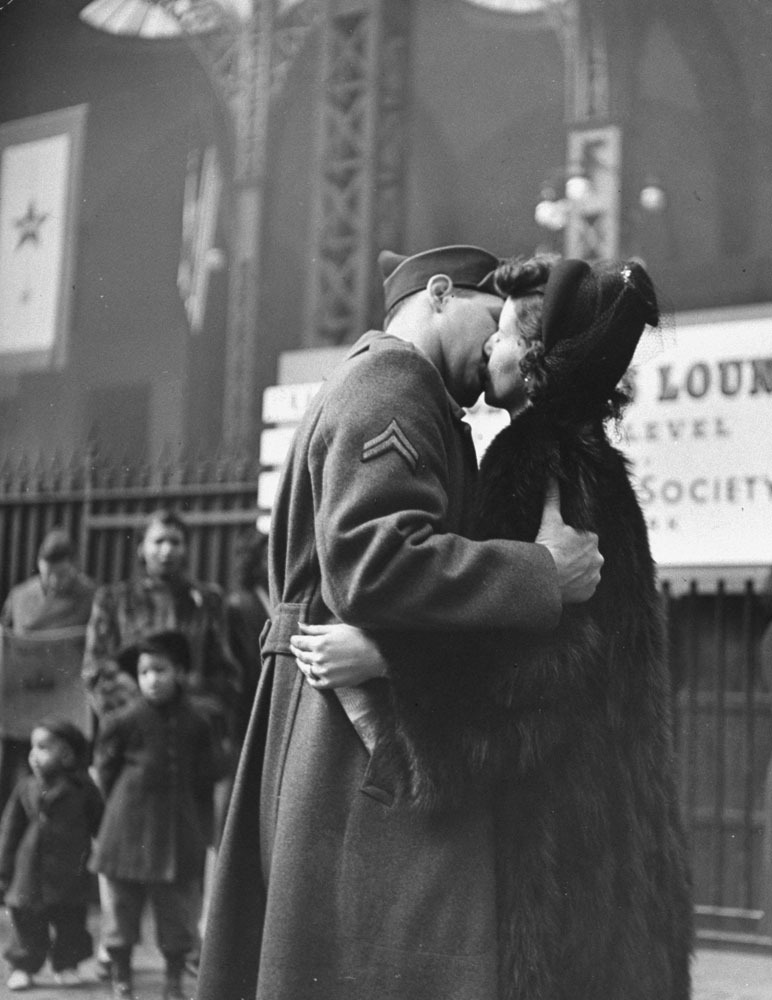
31. Families gather at New York’s Penn Station for emotional farewells, April 1943.
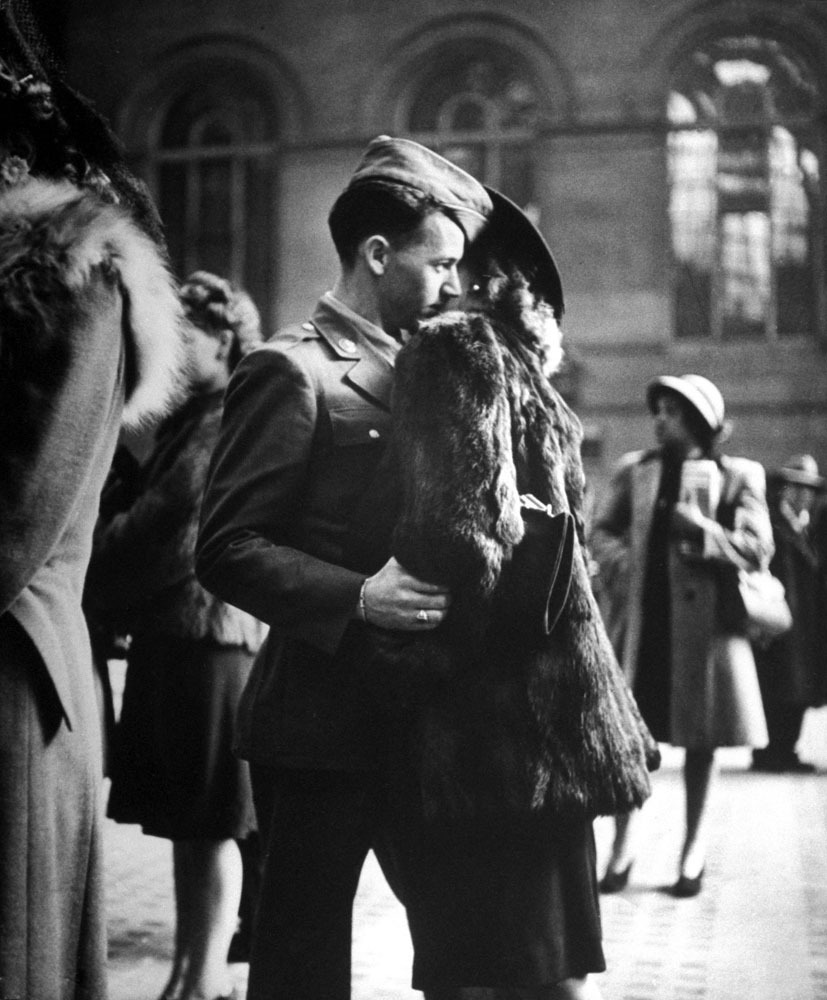
32. Tearful goodbyes at New York’s Penn Station as troops board trains for deployment, April 1943.
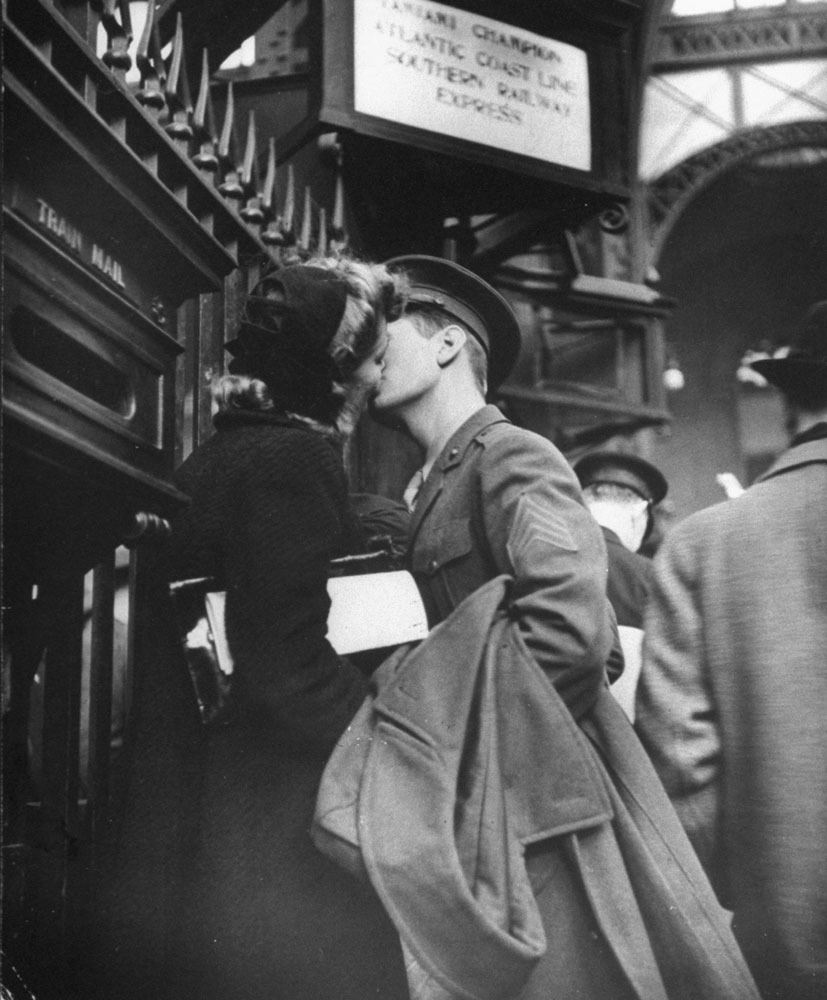
33. Soldiers and loved ones share final embraces at New York’s Penn Station, April 1943.
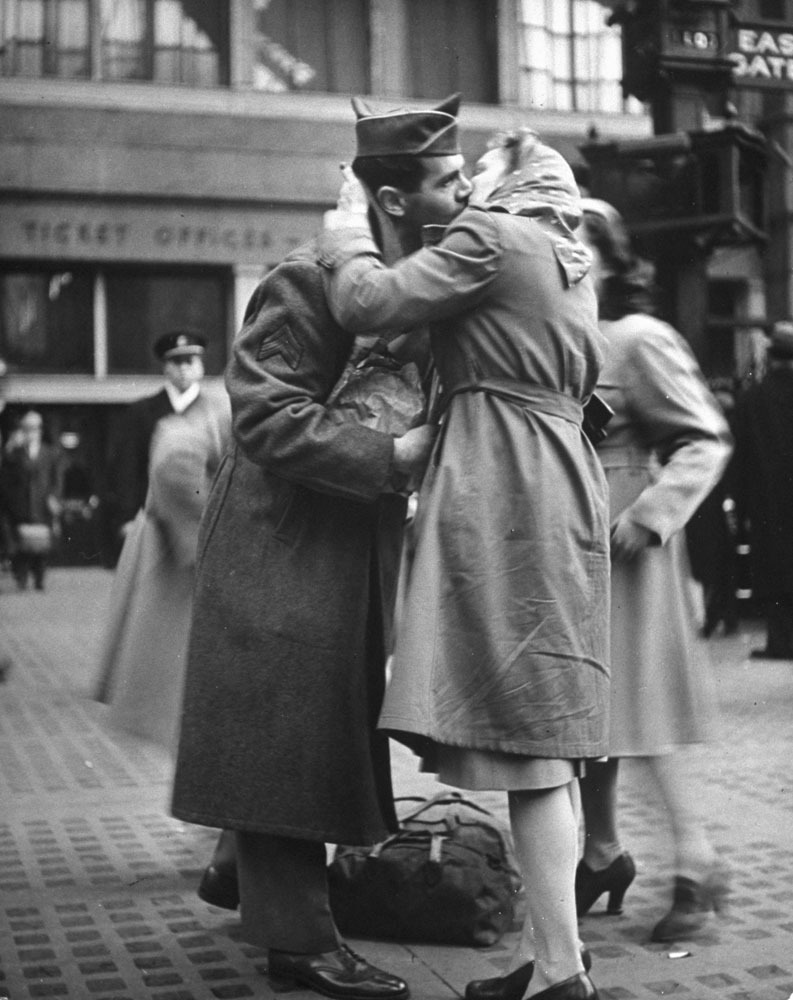
34. Farewell hugs and kisses at New York’s Penn Station before soldiers depart, April 1943.
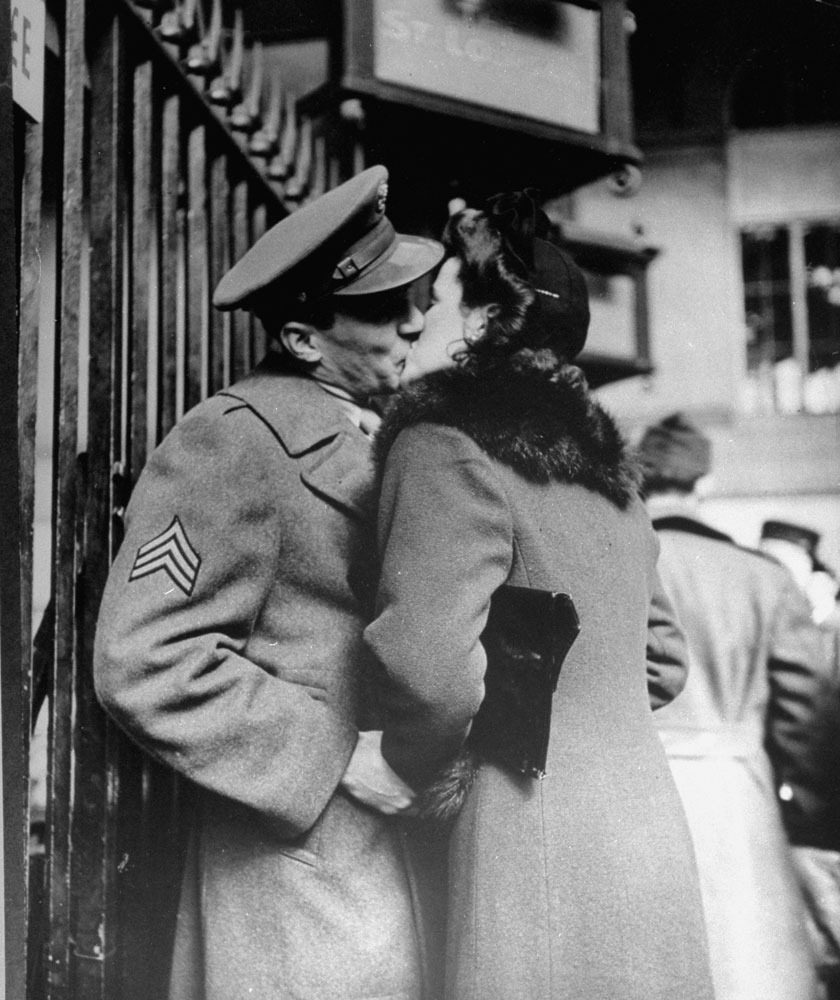
35. Soldiers share tender goodbyes with loved ones at New York’s Penn Station, April 1943.
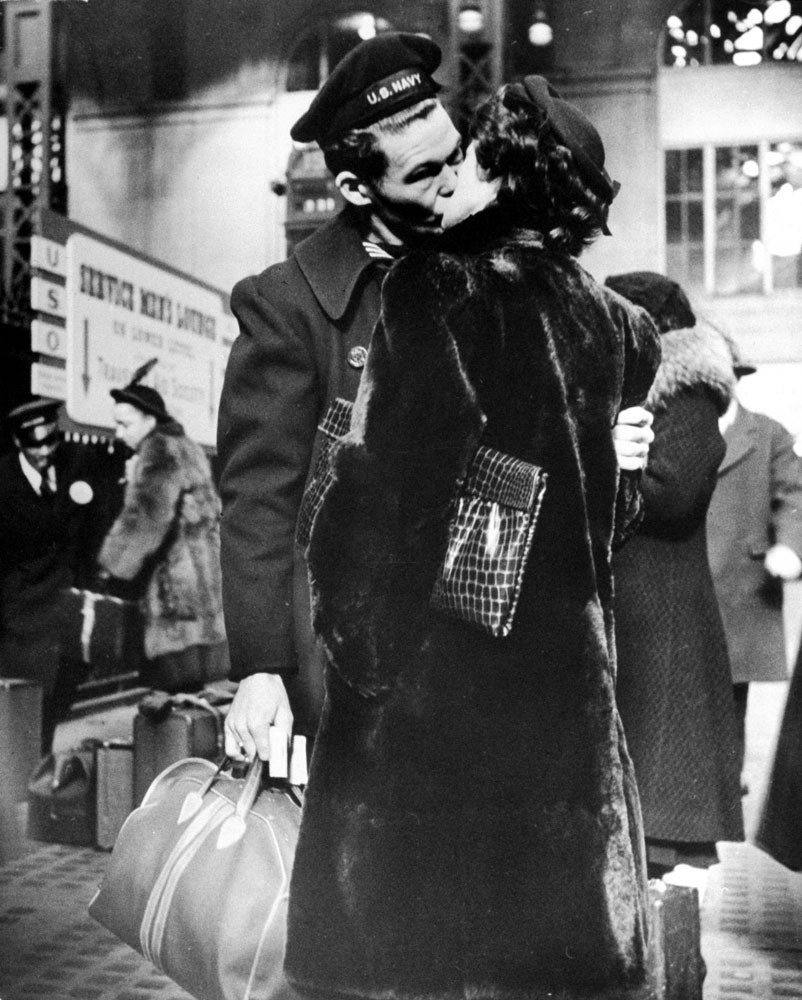
36. Last moments shared at New York’s Penn Station as troops prepare to leave, April 1943.

37. A couple shares a sweet farewell kiss at the bus station, 1943

38. Farewell to departing troops at New York’s Penn Station, April 1943
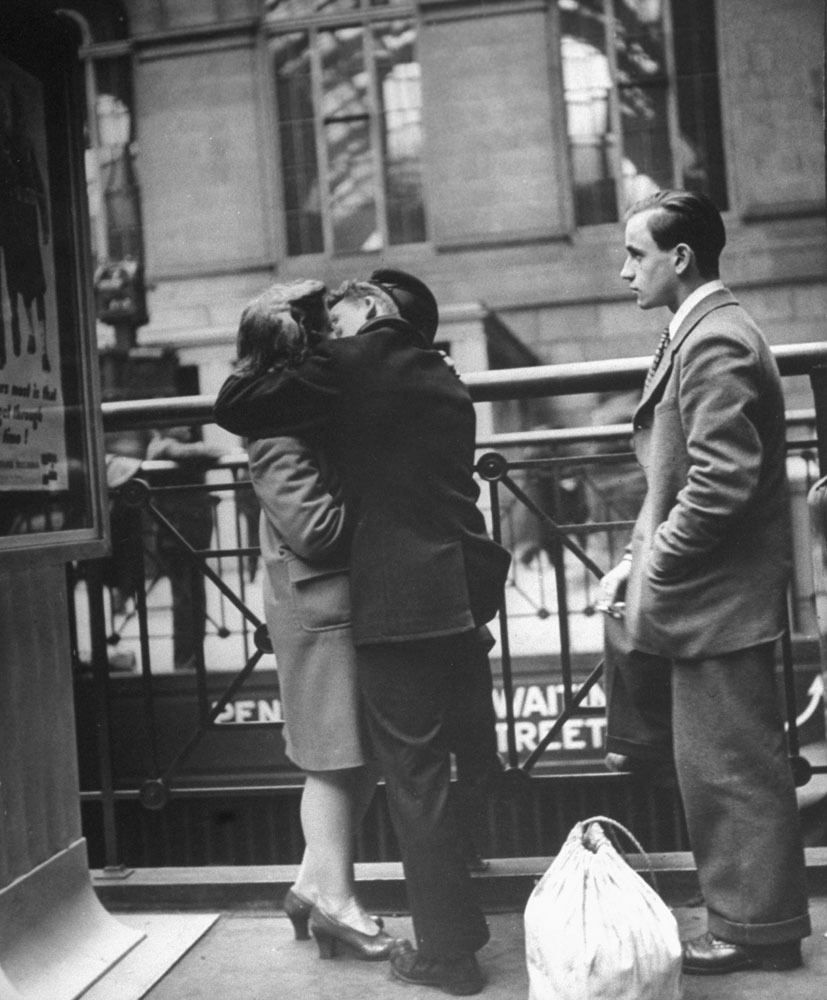
39. A couple shares a passionate kiss before he goes off to fight
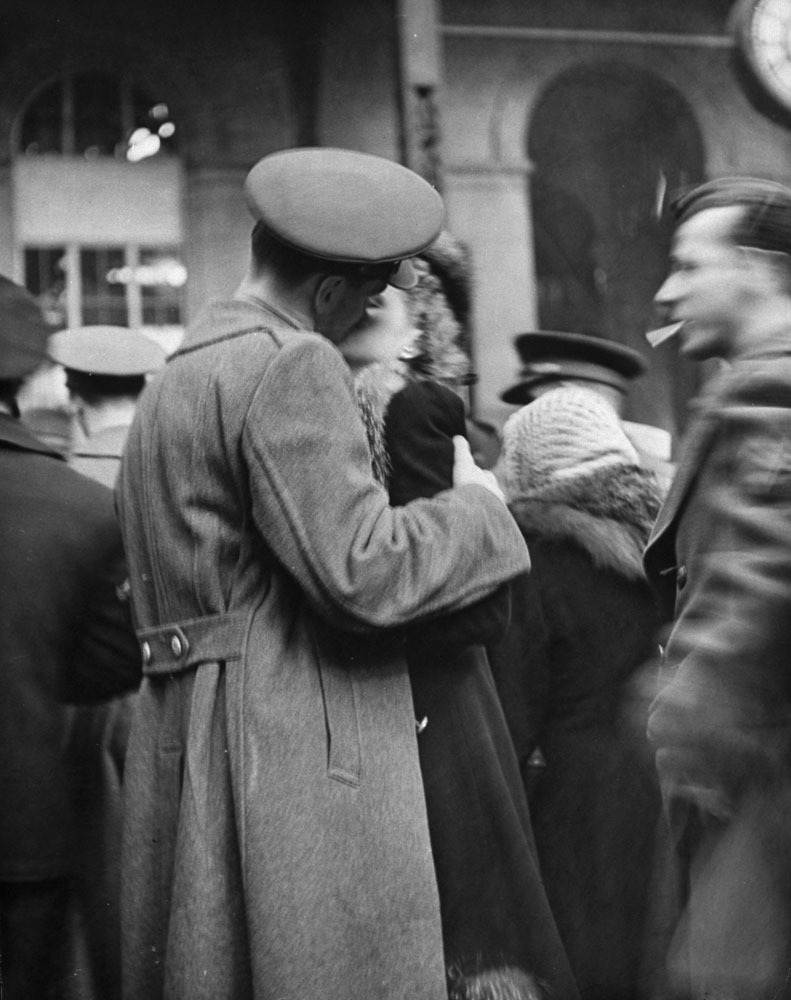
40. A young woman holds her soldier close before he leaves for the front
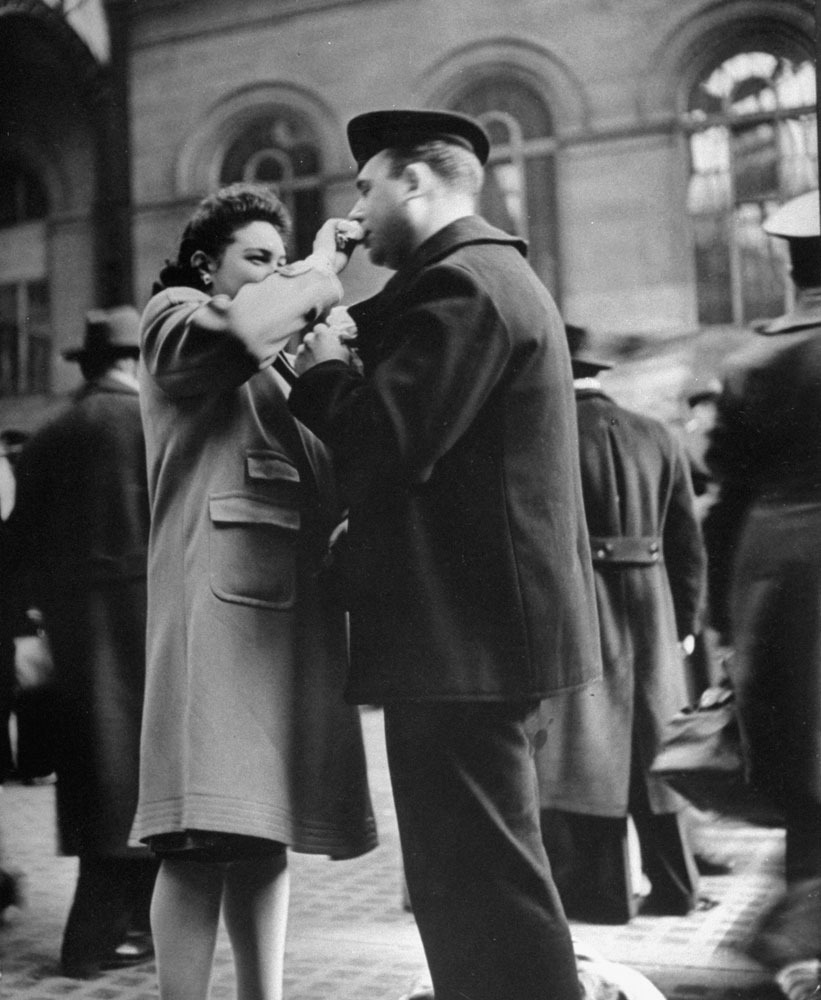
41. A woman stands alone at New York’s Penn Station after
farewell her love, April 1943
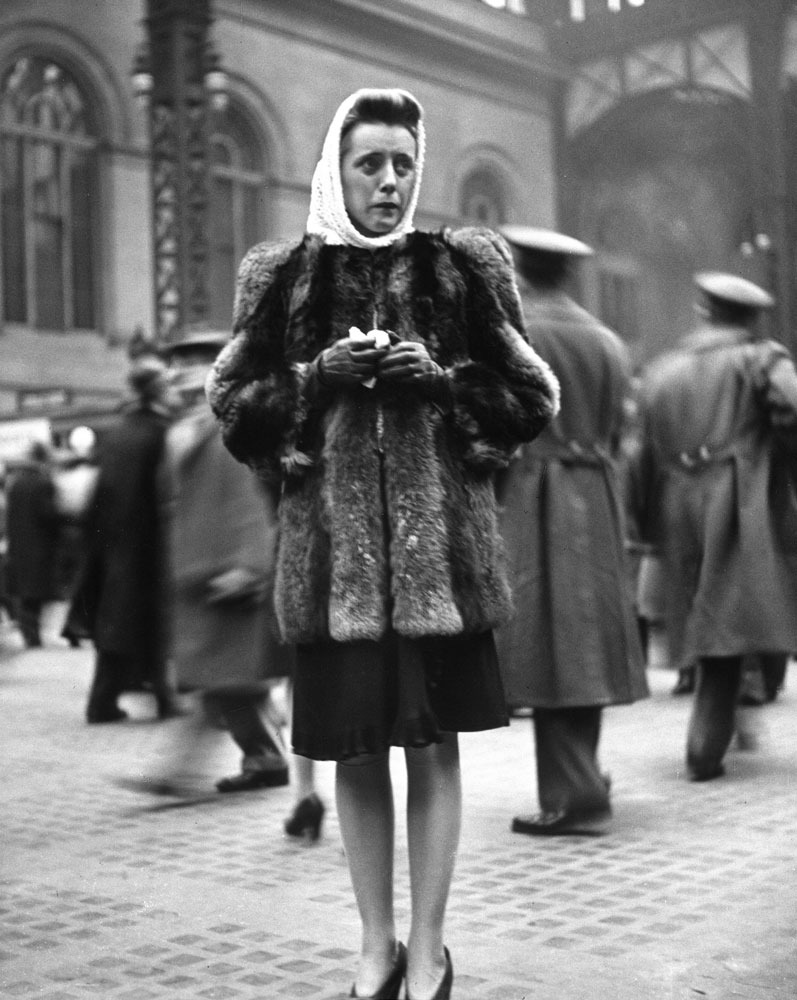
42. A soldier bids farewell to his wife and baby at Pennsylvania Station before deploying with the 4th Infantry Division.


